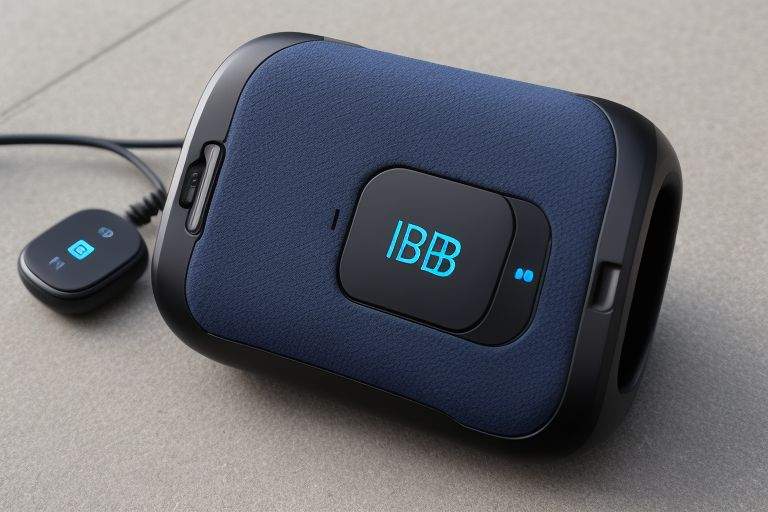
In the modern digital landscape, seamless connectivity and data transmission are paramount for enhancing user experience across various devices. Among the myriad of technologies that facilitate wireless communications, Bluetooth has emerged as a pivotal player since its inception in the late 20th century. This short-range wireless technology has transformed the way we connect and interact with devices, fostering a new era of ergonomics, mobility, and convenience. This essay delves into the evolution of Bluetooth technology, its underlying mechanisms, applications, and the impact it has made across several sectors, while also examining challenges that lie in its path.
Historical Context and Development
The genesis of Bluetooth technology can be traced back to 1989 when Dr. Jaap Haartsen and his team at Ericsson sought to develop a cable replacement for short-range communications. The name “Bluetooth” pays homage to Harald “Bluetooth” Gormsson, a 10th-century Danish king known for uniting warring factions. The first Bluetooth specification was introduced in 1999, and it established a framework for wireless communication over short distances, allowing devices to connect without the clutter of wires.
Bluetooth technology underwent significant advancements with the release of different versions, each enhancing the capability, efficiency, and speed of connections. The early versions, beginning with Bluetooth 1.0, offered a maximum data rate of approximately 720 kbps but had limitations regarding compatibility and connectivity. The turning point was the introduction of Bluetooth 2.0 + EDR (Enhanced Data Rate) in 2004, which doubled data transmission rates and improved power consumption. Subsequent iterations, such as Bluetooth 4.0 and 5.0, introduced low energy (BLE) functionalities to cater to the rising demand for devices requiring minimal power consumption, a significant advancement for the Internet of Things (IoT) ecosystem. As of 2023, Bluetooth 5.3 is the latest version, which continues to improve features such as stability, energy efficiency, and range.

Technical Mechanisms
Bluetooth operates on the 2.4 GHz ISM radio frequency band, utilizing a frequency-hopping spread spectrum to mitigate interference. The technology employs a master-slave architecture to establish a connection. In a typical Bluetooth setup, one device assumes the role of the master while others are designated as slaves. This configuration not only allows for the connection of multiple devices within a single network but also ensures that only one device at a time can transmit data.
The profiling concept is another hallmark of Bluetooth architecture, as it allows devices to communicate effectively depending on their function. For instance, the Hands-Free Profile (HFP) is utilized for hands-free headsets, while the Advanced Audio Distribution Profile (A2DP) is designed for high-quality audio streaming. These profiles enhance compatibility among diverse devices, ensuring that users experience reliable connections regardless of the manufacturer or model.
Applications of Bluetooth Technology
The versatility of Bluetooth technology has led to its widespread adoption across numerous sectors. The consumer electronics industry has been a significant beneficiary, with an overwhelming array of devices employing Bluetooth for connectivity—including smartphones, tablets, laptops, headphones, audio systems, and smart home devices. Bluetooth enables features such as hands-free calling, wireless audio streaming, and automation of household appliances, exemplifying its convenience and utility.
In the healthcare sector, Bluetooth has facilitated the development of medical devices that can monitor patient health metrics in real time. Wearable devices such as fitness trackers and smartwatches can connect wirelessly to smartphones, enabling users to monitor health parameters such as heart rate, steps taken, and sleep patterns. Furthermore, Bluetooth-enabled medical devices, such as glucose meters and blood pressure monitors, can transmit important health data directly to healthcare providers, assisting in timely medical interventions and routine check-ups.
The industrial sector has also capitalized on Bluetooth technology, particularly in automation and asset tracking. Companies employ Bluetooth beacon technology to track inventory or assets within facilities, enhancing operational efficiency. Furthermore, the growing trend of Industry 4.0, characterized by the interconnectivity of smart manufacturing systems, has seen Bluetooth-based solutions flourishing, allowing for real-time monitoring and data analysis.
Challenges and Limitations
Despite its numerous advantages, Bluetooth technology is not without its challenges and limitations. Security has emerged as a significant concern, particularly as the number of Bluetooth-enabled devices increases. The open nature of Bluetooth connectivity makes it susceptible to various cyber threats, such as eavesdropping, man-in-the-middle attacks, and unauthorized access. Although recent Bluetooth versions have implemented enhanced security features, including encryption and authentication measures, the risk remains prevalent.
Additionally, interoperability issues can arise, particularly when different manufacturers implement specifications in varied ways. While the Bluetooth Special Interest Group (SIG) works to standardize protocols and improve compatibility, devices from different brands may still exhibit connectivity issues. Furthermore, the limited range of Bluetooth technology, typically within a range of 100 meters, can be a constraint in environments demanding broader network capabilities.
Future Prospects and Conclusion
As we look forward to the future of Bluetooth technology, the prospect of continued innovation is promising. With the accelerating deployment of 5G technology and the expanding Internet of Things ecosystem, Bluetooth will likely evolve to incorporate enhanced functionalities to accommodate the growing demand for efficient wireless communication. The advent of Bluetooth mesh technology represents one such advancement, enabling secure communication across larger networks of devices, which is particularly beneficial for smart cities and home automation initiatives.
In conclusion, Bluetooth technology has significantly transformed the way we connect and interact with devices across various sectors. From its humble beginnings to its current state as a vital component of the wireless communication paradigm, Bluetooth has fostered an era of convenience and efficiency. While challenges remain, the possibilities for future advancements hold the potential to redefine connectivity in our increasingly digital world. As users and industries continue to harness its capabilities, the ongoing evolution of Bluetooth technology will undoubtedly play a critical role in shaping our technological landscape.







